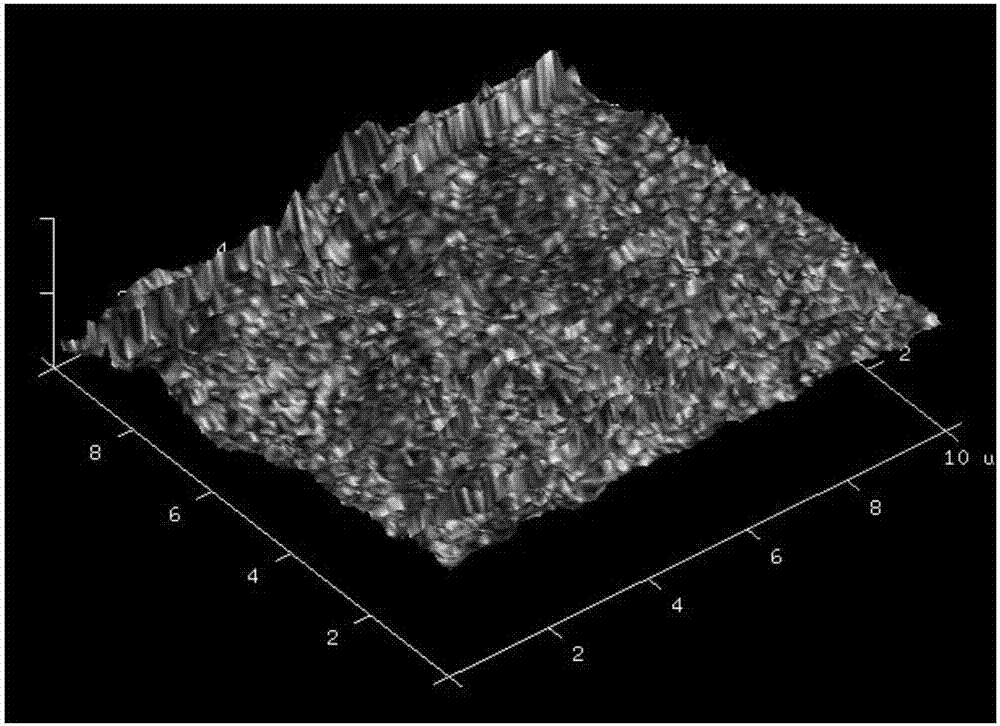Thermal anti-icing / deicing systems include gas thermal anti-icing and electric thermal anti-icing / deicing. Gas thermal anti-icing / deicing generally takes the heat from the
jet engine as the heat source, which is input to the heater on the
skin surface through the control valve. , to heat the surface to achieve deicing, this technology works reliably, but the heat
utilization rate is low, and the
layout of the pipeline is relatively complicated
The above-mentioned deicing systems are mostly designed for deicing the surface of aircraft, but they are not completely suitable for ships and ships sailing in low-temperature and humid environments. It is not only complicated to construct a de-icing system suitable for ships and ships based on the above technologies , and expensive
[0004] After searching the literature of the prior art, it was found that in the patent of Chinese application publication number: CN105517215A, titled "a low-
voltage transparent electric
heating film and its preparation process, a high-temperature electric heating sheet and its preparation process", it is proposed that the transparent electric
heating film includes glass Transparent substrate,
carbon nanotube or
graphene transparent conductive layer and electrodes; the transparent conductive layer is formed on at least one side of the transparent substrate; the electrodes are composed of
bus bars and a number of internal electrodes, and the internal electrodes are extended from the
bus bars to form interdigitated electrodes ; The
electrode is located on the transparent conductive layer and is in electrical contact with the transparent conductive layer, works at a
low voltage (≤12V), and reaches the expected temperature (90°C ~ 180°C). This invention is based on the test results at
room temperature and does not consider The shrinkage effect of different materials at low temperature affects the electrical
conductivity and electrothermal
instability of the material, so it is not suitable for use under low temperature conditions
Chinese application publication number: CN101704410A, titled "Nano superhydrophobic surface for aircraft anti-icing and deicing and its preparation method", the superhydrophobic surface constructed by hydrophobic
microstructure and hydrophobic nano-modified film realizes hydrophobic
microstructure and Connected to the upper surface of the aircraft
skin substrate, the secondary hydrophobic nano-membrane is located on the upper surface of the hydrophobic
microstructure, and is baked at a temperature of 80°C to 100°C for 1 to 5 hours to form a functional surface with superhydrophobic properties, although the invention has
Delay the time of freezing, but once the constructed surface freezes, it will increase the adhesion between the ice and the substrate, and the selected nano-film solidification temperature is relatively high. This method has complex design and difficult implementation
China Application Publication No.: CN105032731A, in the patent titled "Preparation Method of Energy-Saving and Anti-icing
Coating Composite with Super-hydrophobic
Coating and Heating
Coating", discloses an energy-saving anti-icing coating combined with super-hydrophobic coating and heating coating Ice coating preparation method, the heating coating is made of materials such as high temperature resistant conductive
adhesive,
electroplating conductive film, bonding fine
metal mesh or spreading electric
heating film, and spraying a waterproof protective coating with
thermal conductivity on the surface of the heating layer. The
superhydrophobic coating with
thermal conductivity is sprayed on the coating, and
aluminum foil is pasted on both ends as electrodes. This method has the advantages of both coating and electrothermal anti-icing. However, this method has the following disadvantages: (1) The heat-conducting particles use
Graphene, carbon nanotubes and other materials do not exert their electrical
conductivity and waste materials
(2) The heating coating is made of materials such as high-temperature-resistant conductive
adhesive and electroplated conductive film. The complexity of the process and the increase of the
interface layer bring difficulties in implementation, and the reduction of environmental applicability makes it difficult to achieve convenient and low-cost ship anti-icing performance.
 Login to View More
Login to View More  Login to View More
Login to View More 


